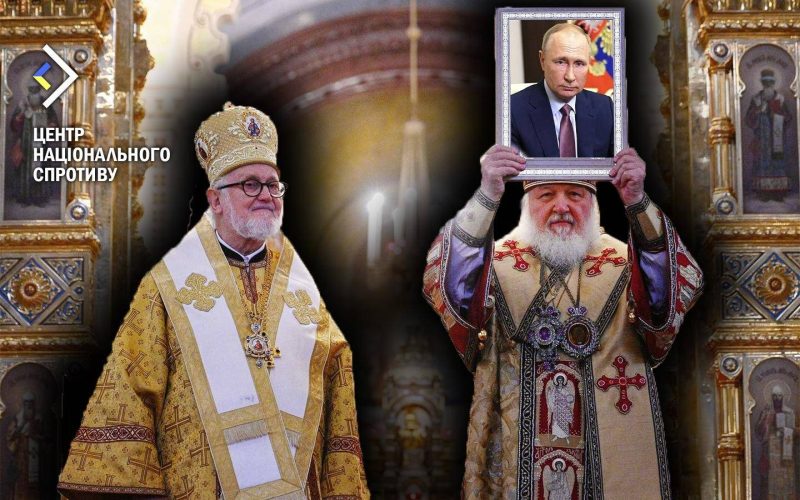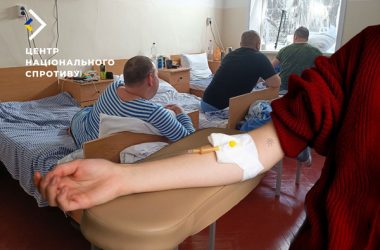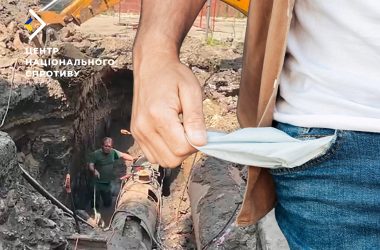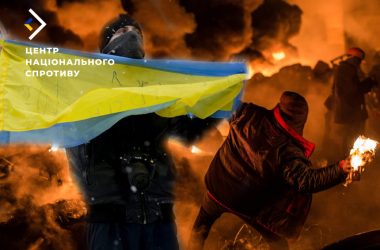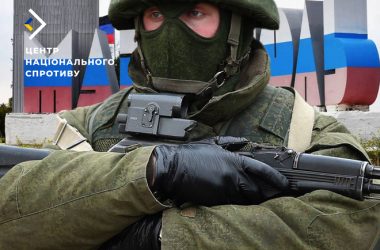In the Russo-Ukrainian war, the Kremlin largely relies on religious structures under its control. The clergy of the Russian Orthodox Church (ROC) play a dominant role in the religious propaganda of the war. The FSB of the Russian Federation directly supervises the activities of this structure.
The branch of this structure within the territory of Ukraine remains the so-called Ukrainian Orthodox Church of the Moscow Patriarchate (UOC MP). Priests of this denomination refused to mourn the dead Ukrainian soldiers and honor them. Many recall the episode in the Verkhovna Rada , where representatives of various faiths were present when they proposed to honor the fallen Ukrainian heroes with a moment of silence. However, only the head of the UOC MP, Metropolitan Onufriy (Berezovsky), and the hierarchs of this church refused to stand up.
Numerous facts confirm the direct involvement of the clergy of this organization in aggression against Ukraine, or their utilization for projecting ‘soft power’ through sermons and appeals to believers. Russia exploited the resources of the churches affiliated with the Moscow Patriarchate for intelligence gathering before the annexation of Crimea and the provision of weapons to Russian militants in Donbas in 2014. These facts have been repeatedly substantiated during SBU searches of religious facilities under the control of this denomination, where Russian passports, pro-Russian literature, ‘documents’ from occupation administrations, and Russian symbols were discovered.
Currently, in the TOT (temporarily occupied territories), the Russian Orthodox Church, with the assistance of the FSB, forcibly seizes churches and religious complexes. Not only of the former UOC MP, but also of the Ukrainian Greek-Catholic Church and the Roman Catholic Church in Ukraine. Priests who refuse to submit to the Russian Orthodox Church are subjected to moral and physical pressure from the invaders. Cases of brutal torture of Ukrainian priests and pastors of Protestant denominations are also known.
More and more, the Kremlin is importing clerics from the territory of the Russian Federation.
Strengthening the militaristic rhetoric after the “re-election” of Putin, the Russian Orthodox Church, for the first time, officially recognized Russian aggression against Ukraine and called it a “holy war”.
Additionally, this week, an instruction was circulated to all parishes of the Russian Orthodox Church regarding the daily recitation of the “prayer for Holy Russia”. The text of this prayer was initially released by the head of the Russian Orthodox Church, Kirill Gundyaev, on September 25, 2022. This propagandistic prayer serves as the embodiment of the “Russian world” ideology for the parishioners of the Russian Orthodox Church. It promotes a conspiracy theory about the intention of external forces to divide the ‘three-unit Russian people’. It emphasizes the necessity of unity against external aggression while soliciting assistance for the actions of the invading Russian troops.
Therefore, the participation of the Russian Orthodox Church in Russian aggression against Ukraine plays the following role:
1. Patriotic propaganda: Clergymen act as patriotic symbols, supporting Russia’s unity and military actions against Ukraine. They pray for Russia’s victory and protection.
2. Moral support of the military: Clergymen regularly visit military units, provide “spiritual” support to military personnel, and discuss military events, arguing them with biblical stories taken out of context.
3. Legitimization of military actions: ROC uses its resources to legitimize the military actions of Russia against Ukraine. They justify the war by protecting the “Orthodox faith, culture and traditional Russian values.”
4. Religious mobilization: Clergymen call on the faithful to support military actions, using religious arguments and images to persuade them to participate in the war in the ranks of the Russian invading forces.
5. Symbolism and rituals: The Russian Orthodox Church holds religious rites, prayers, and public events (crusades) to support the Kremlin’s militaristic ideology and military actions.
In such circumstances, the TOT population should distance themselves from representatives of this denomination. Clerics of this organization should certainly not be entrusted with the sacrament of confession. Ukrainian clergy and believers will need to establish underground church cells. In doing so, it is worth recalling the experience of the Ukrainian church’s operation underground during the communist occupation of Ukraine.

